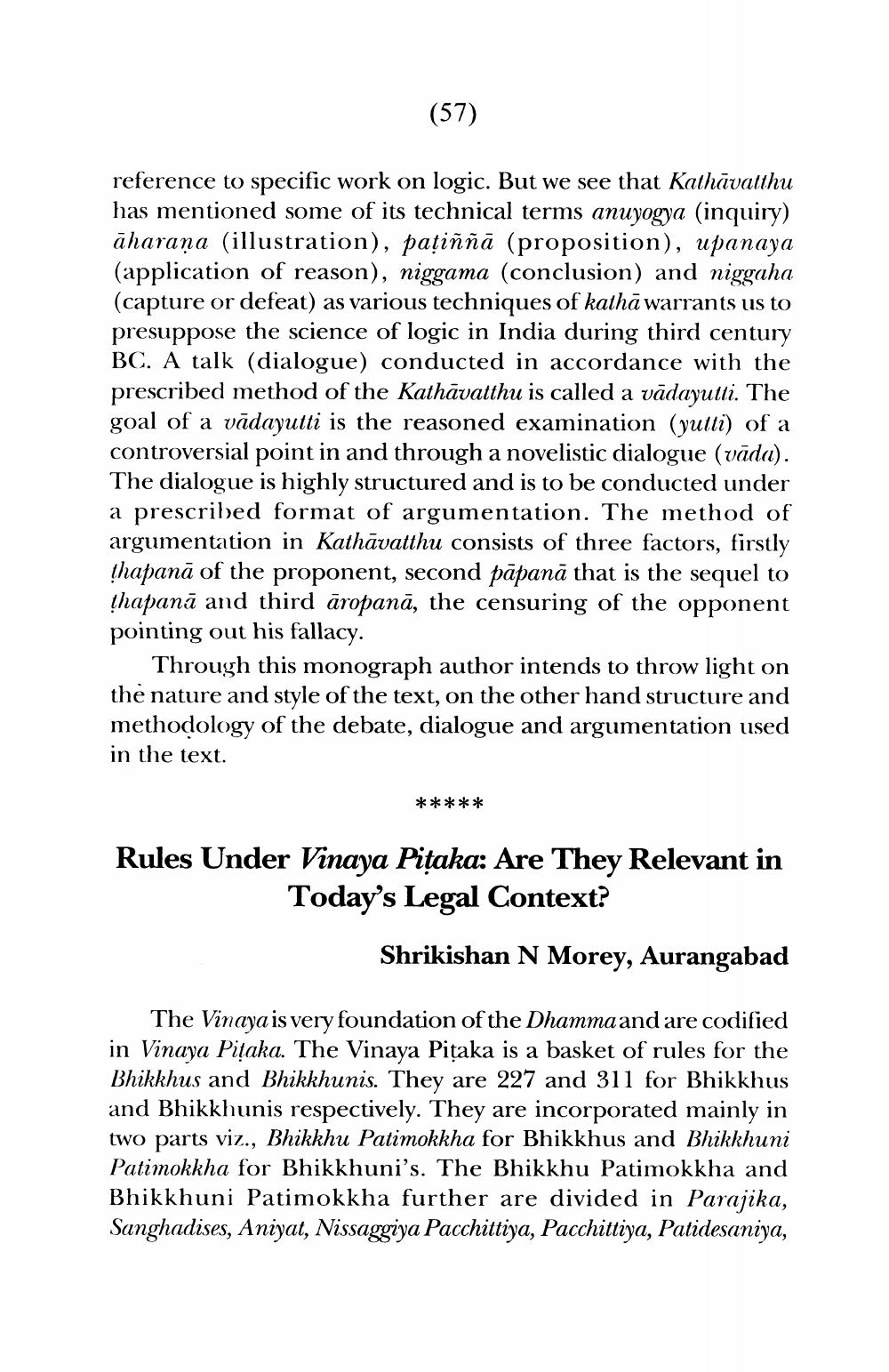________________
(57)
reference to specific work on logic. But we see that Kathāvatthu has mentioned some of its technical terms anuyogya (inquiry) aharaṇa (illustration), pațiññā (proposition), upanaya (application of reason), niggama (conclusion) and niggaha (capture or defeat) as various techniques of kathā warrants us to presuppose the science of logic in India during third century BC. A talk (dialogue) conducted in accordance with the prescribed method of the Kathavatthu is called a vādayutti. The goal of a vadayutti is the reasoned examination (yutti) of a controversial point in and through a novelistic dialogue (vāda). The dialogue is highly structured and is to be conducted under a prescribed format of argumentation. The method of argumentation in Kathāvatthu consists of three factors, firstly thapana of the proponent, second pāpanā that is the sequel to thapana and third aropana, the censuring of the opponent pointing out his fallacy.
Through this monograph author intends to throw light on the nature and style of the text, on the other hand structure and methodology of the debate, dialogue and argumentation used in the text.
*****
Rules Under Vinaya Piṭaka: Are They Relevant in Today's Legal Context?
Shrikishan N Morey, Aurangabad
The Vinaya is very foundation of the Dhamma and are codified in Vinaya Pitaka. The Vinaya Piṭaka is a basket of rules for the Bhikkhus and Bhikkhunis. They are 227 and 311 for Bhikkhus and Bhikkhunis respectively. They are incorporated mainly in two parts viz., Bhikkhu Patimokkha for Bhikkhus and Bhikkhuni Patimokkha for Bhikkhuni's. The Bhikkhu Patimokkha and Bhikkhuni Patimokkha further are divided in Parajika, Sanghadises, Aniyat, Nissaggiya Pacchittiya, Pacchittiya, Patidesaniya,




